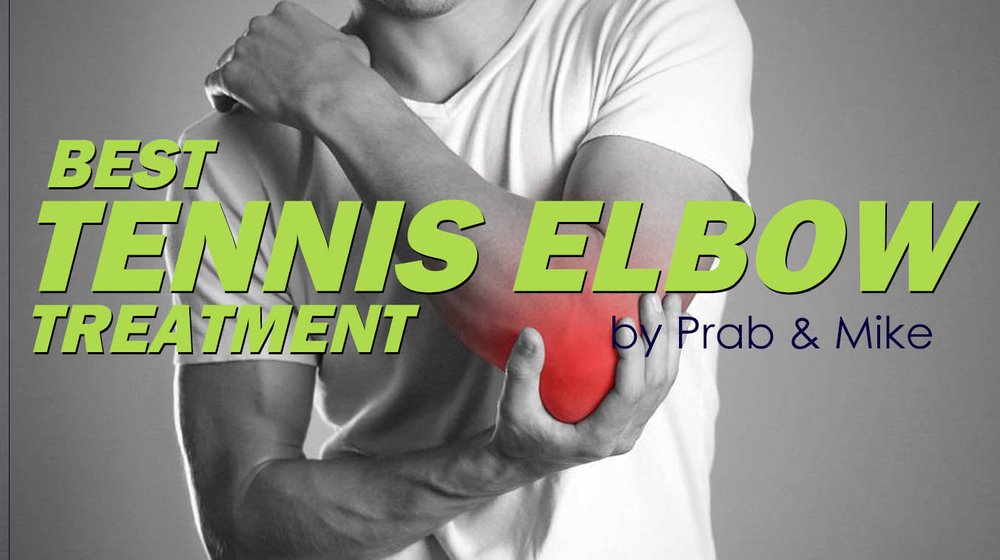Considering tennis elbow is an overuse injury, it is important during the early phase to consult a health professional as soon as possible to prevent your symptoms from worsening.
If this is something you have tolerated for a while, reducing your activity may give you some short term relief but won’t address the root cause of your symptoms.
In understanding this concept it is important to delve into the anatomy of a tennis elbow.
Tennis elbow specifically denotes injury to the tendon within the lateral elbow. This is simply a structure that connects the muscles on the back of your forearm to your elbow bone known as the lateral epicondyle

According to tendon whiz, Jill Cook, there are 4 stages that must be considered when treating a tennis elbow, best guided by your physiotherapist.
Stage 1 – Isometric
Reduce pain
Stage 2 – Strength
Muscle kinetic chain strength
Functional strength
Strength endurance
Stage 3 – Energy Storage
Faster
End of range eccentric
Stage 4 – Energy Storage and Release
Sport specific loading
These guidelines highlight the primary goal of return to function specific to your goals. Early phase focuses on pain reduction then progressively loading the affected tendon in the hope that it will adapt and tolerate the demands of your specific activity.
These adaptations will produce sustainable results in order for you to complete your desired activity, long term.
How Do You Know You Have A Tennis Elbow?
As previously mentioned, tennis elbow refers to inflammation or pain along the lateral aspect of your elbow.
This can present alongside a few aggravating movements, including; pain when trying to grasp or lift heavier objects, pain when extending the wrist and when twisting the wrist such as when turning a door knob.
A simple self test to administer is Maudsley’s test.
This involves placing your affected limb on a flat surface. Next attempt to raise your middle finger while adding resistance from your other hand.
A positive is reproduction of your pain at the lateral elbow.

Additionally, diagnosis can also be confirmed with the help of MRI or Ultrasound Imaging.
What Happens If Tennis Elbow Goes Untreated?
Unlike some injuries, tennis elbow seldom improves with rest. According to Jill Cook this does more harm than good.
Though there are signs of degeneration within the affected tendon, the main focus of rehab is to improve the healthy tendon around the dysfunctional part.
Creating those adaptations by strengthening the healthy tendon can make the overall tendon strong enough to make up for the weakened part.
Therefore, if we were to simply rest, or leave our tennis elbow untreated, our tendon will remain unchanged. If anything, it may become more weakened due to our lack of activity which will then leave us within the vicious cycle of pain, weakness and lack of function.
Furthermore, it is imperative to take an active loading approach towards tendon rehab in order to create sustainable changes for the long term.
How Long Does It Take For A Tennis Elbow To Heal?
There is no clear timeframe that can be provided for the healing times of a tennis elbow as it varies from person to person and is heavily dependent on the severity of the condition. Furthermore, the type of rehabilitation and numerous factors such as the patient’s work type all play a part in the healing time.
However, in general, it can take a few weeks (anywhere from 1 to 3 weeks) for significant reductions in symptoms and pain with physiotherapy or medical management and a further 3 to 5 weeks for the condition to resolve (in total approx 6 to 8 weeks from condition start).
In certain cases, it then may take a further 6 to 12 months for the tendon to heal with ongoing rehabilitation. If the symptoms don’t improve within 6 to 8 weeks, corticosteroids may be recommended and if it doesn’t improve within 6 to 12 months, surgical options may be considered. (uni of michigan + https://tenniselbow.com/blogs/tenniselbow/how-long-does-tennis-elbow-take-to-heal + knox orthopaedics)
What Movements Should I Avoid With Tennis Elbow?
As mentioned before, avoiding any movements that cause an increase in pain or symptoms is important during the early phases of recovery. However, here are a few more things that you should avoid (especially in the gym) if you are managing a tricky tennis elbow!
Chin-ups, push-ups, bench presses, straight arm exercises or any repetitive lifting or motions should be avoided during the early stages of a tennis elbow injuries and in certain cases during the later management of the condition.
The reason for this is that these activities or exercises place a lot of strain on the muscles of the elbow which can lead to an irritation of the lateral tendons and place excessive strain on the muscles of the wrist and elbow which can all worsen the condition.
Remember to consult with a relevant medical professional before returning to the gym, work or trying new exercises if you are managing a tennis elbow!

